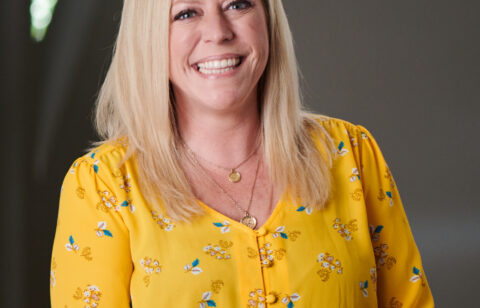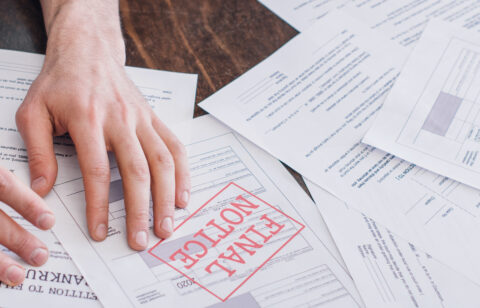One of the worst things about being in debt is feeling like you’re alone and you’ve somehow failed. Meanwhile, the complete opposite is true. According to the credit-reporting bureau Experian, American consumers had nearly $825 billion in credit card debt in 2022.
Let’s face it, the last few years have been tough for everyone. Many people lost their jobs during the COVID-19 pandemic. Unfortunately, inflation and rising interest rates have taken more money out of everyone’s wallet.
Whatever circumstances put you into debt, what’s important now is how you’re going to pay your way out and remain debt free. Let’s start with the basics.
People Also Read
How Did the Debt Accumulate?
Were you already in debt when the pandemic and inflation threw the economy for a loop? Until you figure out what went wrong with your spending, you’re vulnerable to repeating past mistakes. Perhaps it was an illness, a job loss, or a huge unexpected expense. Or maybe your spending just got out of control for one reason or another. Whatever it is, you need to determine what went wrong before you can make it right.
How Much Debt Do You Owe?
Surprisingly, many people in debt don’t know exactly how much they owe. If you’re paying just the minimums on credit cards, the interest and fees can boost the overdue balance every month. And you might think that you owe less on a loan than you actually do. But hey, you also could owe less than you think on other loans.
It’s important to know how much you owe each lender before creating a strategy to pay them off. So, stop right now and make a list of all of your debts. Record the outstanding balances, the minimum monthly payments, and the interest rates being applied to each balance every month. Then add it up to see what you’re dealing with.
How Much Money Do You Have To Work With?
The next step is to get a handle on how much cash is coming in each month and how much is going out. Consider all sources, including paychecks, alimony or child support, side hustles, investments, if you’re currently collecting social security, etc.
It might turn out that there’s more coming in than going out and that your financial situation isn’t as bad as you perceive it to be. With a bit of rearranging, you could manage your bills better and use the extra proceeds to pay off your debt. On the other hand, it’s time to look for ways to turn things around if there’s more going out than coming in.
Develop a Spending Plan
Now that you’ve figured out how much debt you have and how much cash you have coming in, the next step is to look at your household expenses. How much are you paying every month for utilities, gas, water, electricity, telephone, internet, food, entertainment, clothing, and the like? Look for ways to cut back so you can divert more of that money toward paying off your balances.
Focusing on needs vs. wants is a good place to start. Buying a $5 cup of coffee on the way to work each morning costs $200 a month. Buy a thermos, make the coffee at home, and put the extra $200 toward credit card bills. Instead of going out with friends, host a potluck dinner and watch a movie at home. In other words, look for ways to make the money coming in go further.
Look For Ways to Earn More Money
Even after taking all of the steps above, things can still come up a bit short. You’re going to need to find a way to bring in more money in such cases. A lot of people take part-time jobs.
You could also search for items at garage sales, in your attic and your closet, or consign items from others to sell online. Craigslist, eBay, and online consignment stores are ideal for turning what you no longer need or use into cash.
Put Together A Payoff Strategy
Remember up above when you totaled up all of your debt, listed the amounts owed, the minimum monthly payments, and the interest rates? You can use that information to create a pay-off strategy that works within your budget.
Some people figure out how much they have to put toward debt payments in total each month, divide it evenly among all of their loans and make payments until everything is repaid. But that strategy requires discipline, and most people aren’t successful in doing it on their own.
Others make minimum payments just to try to keep up. However, you could end up paying thousands more in interest over a long period of time.
A better option would be to pay off your highest-interest credit card first. You can then repeat the process and work your way down until you are debt free. This could save you money, as you’ll eliminate the high-interest debts first. But it could also take longer. A debt repayment calculator can help you figure out which plan is best in that regard.
If you feel you have the discipline to pay off the debt on your own, make sure payments are made on time each month. Otherwise, late fees and interest rate hikes can hike the debt even higher. But if you’re like most people in debt, paying it off requires a helping hand.
Seek Professional Help
If you can’t generate enough money to put together a pay-off strategy on your own, it’s time to seek professional help. Debt relief can help you pay off your debt for less than you owe and in a shorter amount of time.
In fact, debt relief, also known as debt settlement, has helped hundreds of thousands of people pay a lump sum that is less than the amount they owe. If this suits your financial situation, an expert will negotiate with creditors on your behalf to reduce the amount of debt. They will also set up affordable monthly payments for you to pay off the debt you owe. You could see your accounts resolved in as little as 24-48 months. However, If you do not have an income and can’t afford the monthly payments, you most likely won’t qualify for debt relief.
But don’t worry, there are other options to consider.
Credit Counseling
This debt relief option simplifies your repayment process, making it easier to pay off your debt. When you contact an agency via a website or in person, a counselor will spend about an hour discussing your finances—often at no cost.
If your debt is substantial, the counselor may recommend a debt management plan (DMP). In this scenario, your counselor will determine how much you can pay and then negotiate with creditors on your behalf. The negotiation can include longer terms, lower monthly payments determined by what you can afford or a reduction in interest rates. You may also get penalty charges and fees waived. You will send payments to the credit counselor, who will then forward them to creditors.
While your monthly payment will likely be lower than the amounts you’re currently paying, this process can exceed a typical debt resolution program.
Debt Consolidation
This form of debt refinancing entails taking out one loan to pay off many others. It restructures your higher interest-rate debt and enables you to make one affordable monthly payment. This does nothing to lower your monthly balance unless you extend the length of the loan. But it does make managing your debt much easier and greatly reduces the chance of accidentally missing a payment.
Bankruptcy
Bankruptcy provides protection for consumers who find themselves drowning in debt. Whether you file for Chapter 7 or Chapter 11 bankruptcy, it’s not an easy way out. There will be a stain on your credit reports for 10 years and in your personal file for life.
A Chapter 7 bankruptcy would likely lower your credit score substantially and make it nearly impossible for you to get any new credit for two or three years. Plus, when you can get credit again, it will be low amounts at high-interest rates.
Congratulations, You Are Debt Free
Now that you have the debt problem resolved, it’s time to take steps to ensure you don’t find yourself in the same situation.
The day your last overdue balance is paid off is the day you should begin saving the money you were putting toward those debts. The first thing to do is accumulate an emergency fund equivalent to six months of your household expenses. This way, you’ll be prepared to deal with the unexpected like losing a job, or getting hit with a huge medical bill.
Avoid creating new debt—period. Pay cash for purchases whenever possible. Save up to make large purchases rather than charging them. Get your free credit reports to make sure they don’t contain mistakes and/or fraudulent charges. Review your account statements each month to ensure their accuracy. And, stick to a spending plan that will allow you to comfortably meet all of your expenses, enjoy life, and save, save, save.









